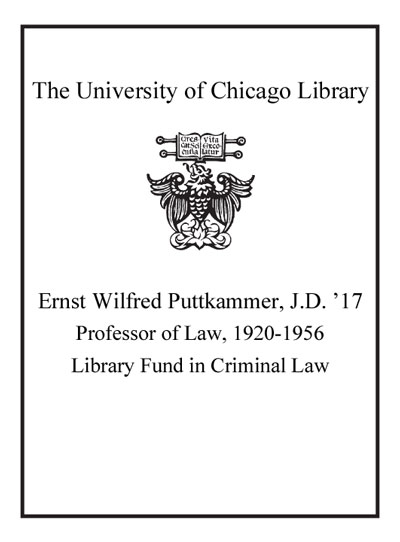Critical to any meaningful understanding of criminal law is the look back at its heritage and history. From whence does the criminal law come? So crucial is this question that most modern practitioners take for granted the enactment and application of criminal laws, as if the statutes have always been here or arose because of chance or accident. Nothing could be further from the truth. Indeed, criminal law, like every other sort of law, has a long and distinguished history. What presently exists emerges from the introspection and analysis of our predecessors who thought it worth the definition. Chapter 1 tries to tell you why the criminal codes came about and focuses its attention on the moral, religious, spiritual, and human influences that led up to our present system. Tracking all the way back to the Romans and Greeks, the chapter attempts to provide the type of historical perspective often missing in criminal law texts and affords the reader with a critical, histrionic perspective. Criminal laws, put another way, have a genealogy and are often wrapped up in religious and moral traditions, politics, and social forces, and find their way to contemporary times with this baggage-some of it good, others bad. In sum, Chapter 1 blends the worlds of history, philosophy, ethics, and moral tradition with the modern statutory frameworks. As such, the chapter looks at great thinkers who played central roles in the shaping of criminal laws, such as Aquinas, Plato, Hobbes, Bentham, and Locke. In the final analysis the reader will appreciate the complicated origins of criminal law and discern the diverse forces at work in the shaping of the modern American criminal law system. Chapter 2 is primarily definitional in design and introduces the reader to the myriad of ways crime is described in the modern criminal justice model. Crimes are defined from varied perspectives including the issue of moral and ethical prohibition, custom and habit, mores and cultural expectation, and as judgment concerning the propriety of conduct-namely whether it is deviant or other form of aberration. Next, the reader will be introduced to the formalistic definitions commonly witnessed in criminal codes, from larceny and misdemeanors to summary offenses and minor infractions. Add to this a full examination of how crime definitions are tied to potential punishments that can be inflicted for the proscribed conduct. Finally, the chapter considers how criminal participants are categorized and how their roles are designated in the form of principals, accessories, and vicarious liability. At the heart of all criminal conduct lie the elements of act and mind-subject of Chapter 3. Actus reus, the thing done or act committed, and mens rea, the mind and the intent of the actor, form the two seminal elements necessary for criminal culpability. Without these essential elements criminal responsibility can never be imposed. For in the American criminal law system, defendants taste the retribution of punishment only when demonstrably responsible for the act, both factually and mentally. In this sense, the American conception of criminal responsibility calls for two-prong analysis: what did the actor do and, secondly, did the actor understand or appreciate the act chosen? Both components form the criminal proof in the prosecution. Both weigh heavily on the tactics of lawyers, the assessment of jury panels, and the scrutinies of appeals and trial judges. Aside from intentional acts, the criminal law excuses mistakes and certain forms of ignorance and fully appreciates the dynamics of coercion and duress, mental capability and infancy, and other factors that affect the voluntariness of human activity. On the mental side, the law distinguishes the severity and grades of criminal offense by the level and clarity of mental thought. The mentally focused, unburdened by disease or illness, and fully plotting the resultant crime, are considered Excerpted from Criminal Law by Charles P. Nemeth All rights reserved by the original copyright owners. Excerpts are provided for display purposes only and may not be reproduced, reprinted or distributed without the written permission of the publisher.

